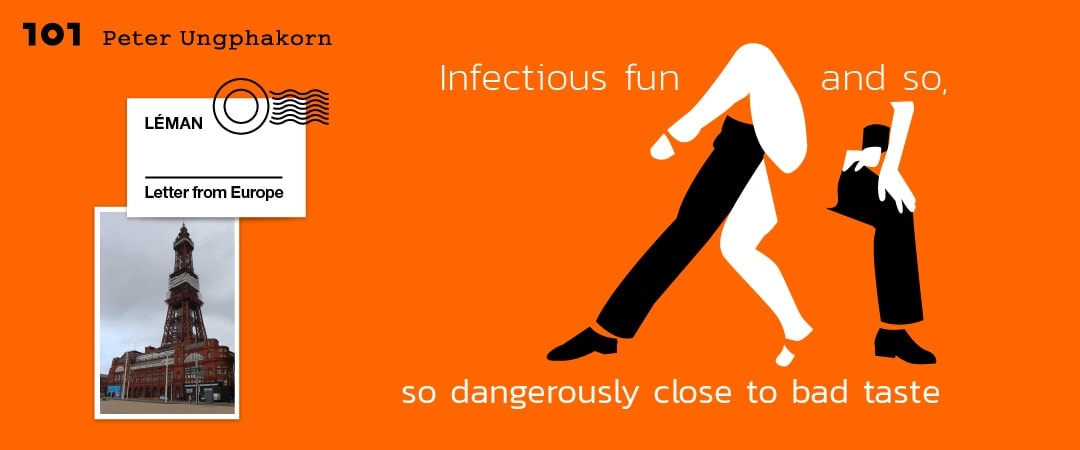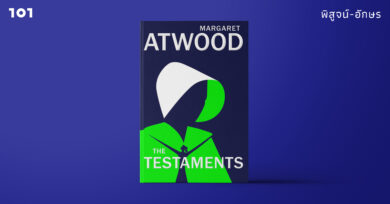Peter Ungphakorn
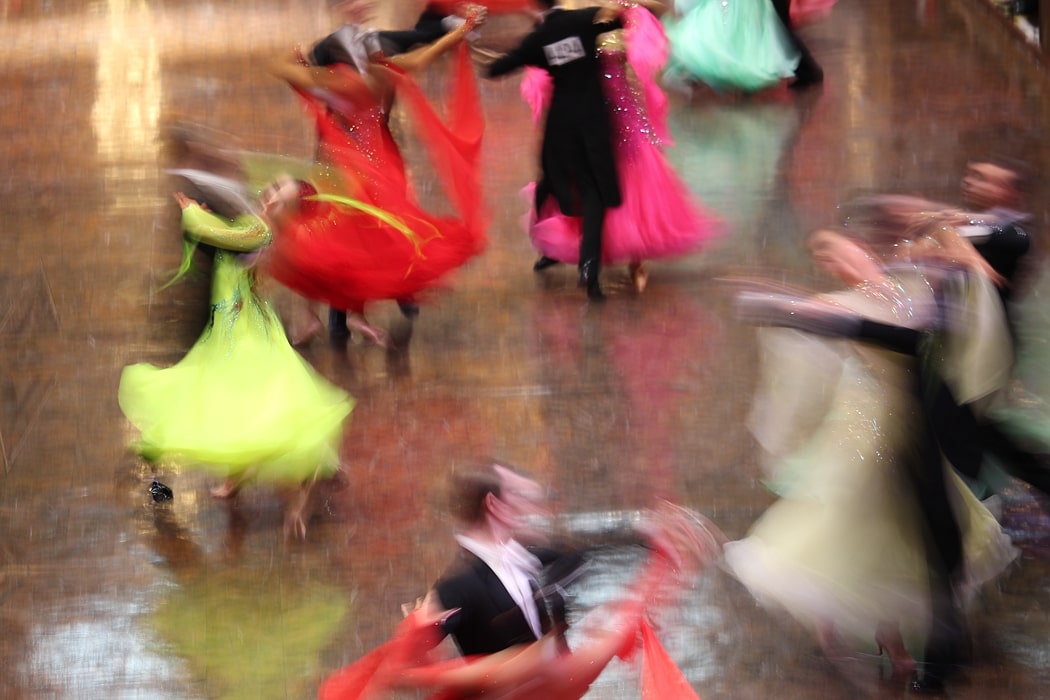
I have a confession to make. I’ve been aware of ballroom dancing for decades, ever since I first saw “Come Dancing” on British television. And I’ve hated it.
That programme was a competition for amateur enthusiasts — unlike “Strictly Come Dancing”, its successor. “Strictly” features celebrities partnered by professionals, now averages 11 million viewers and has been exported to over 40 countries as “Dancing with the Stars” (it seems to have run only one season in Thailand, though).
Amazingly, the original Come Dancing ran for almost half a century from 1950 to 1998. I thought it was dreadful.
I hated the ridiculous costumes, the awful make-up, the exaggerated movements, and above all the old-fashioned dance music. I just didn’t get it. It was the worst kind of “kitsch” imaginable.
Then came “Strictly”, weekend evenings watching it, and a family member who started to train, joined a university dance club and entered student competitions.
And that’s how I ended up in Blackpool last month, watching the biggest university dance competition of the year.
Second confession: I enjoyed it. And it wasn’t my first time either. I’ve been to three competitions now, one also a previous Blackpool event.
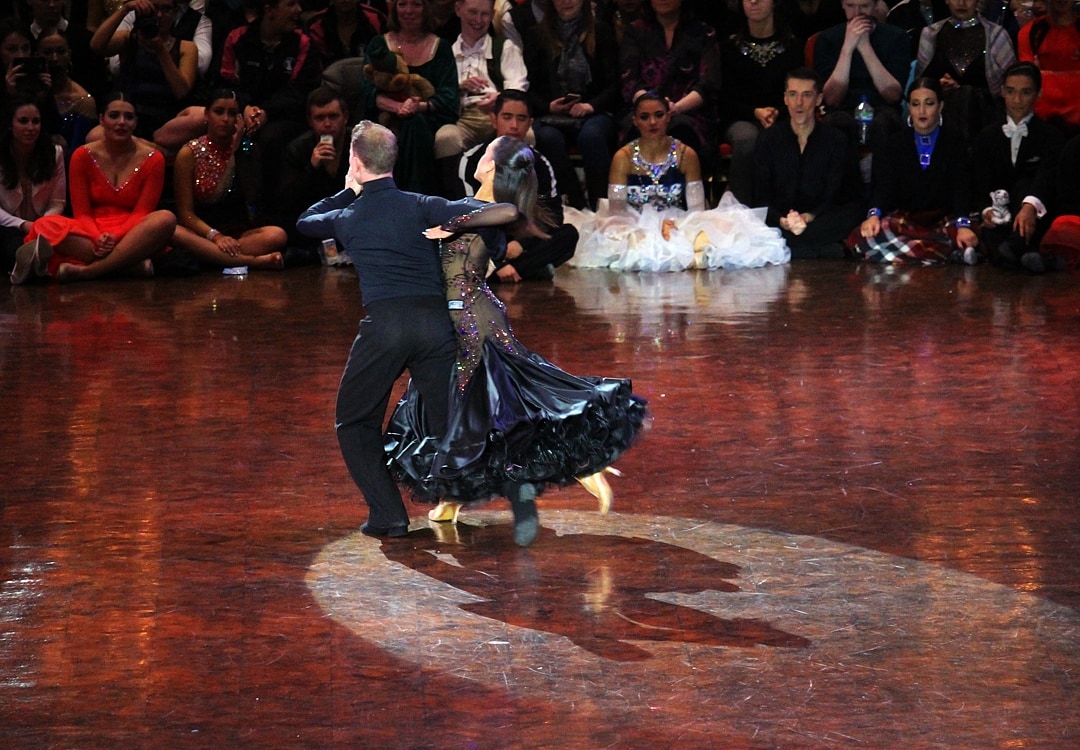
It’s grim outside
Blackpool. Once upon a time, it was the holiday destination for thousands if not millions of people in northwest England. With its beach, pier, donkey rides and iconic tower (a stumpy imitation of the Eiffel Tower), and streets of hotels and bed-and-breakfasts, it was within reach of the industrial conglomerates of Manchester, Liverpool, and the rest of Lancashire and beyond.
Some northerners still go to Blackpool, just for the day with young children, and some out of nostalgia for the family holidays they enjoyed when they were children. But generally, Blackpool has suffered from the cheap travel that has encouraged holidaymakers to flood to the beaches of the Mediterranean and the tropics.
It is now run down. It still has the pier, the annual illumination of the tower, and an amusement park — but nothing compared to the theme parks scattered around Britain. Even its football club, not so long ago playing in the heights of the English Premier League, has sunk to lower divisions, damaged by its owners’ mishandling, and now up for sale.
Grimmest of all is Blackpool in cold, grey, windy February.
Except.
Except that Blackpool still has the facilities to host big events. And that means it continues to be the capital of ballroom dancing in Britain and much of the world.
Halfway through each series of Strictly Come Dancing is a session in Blackpool’s Tower Ballroom, considered a highlight for the competitors.
But, I’ve now learnt, the Tower Ballroom is not the main venue. It’s just more convenient for TV. No, the main venue is the Empress Ballroom in the nearby Winter Gardens, with a larger, shiny and amazingly springy suspended wooden floor.
That’s where the Intervarsity Dance Association’s big annual do was held last month. Outside, it was a normal grey Blackpool February day. Inside, it was all colour, energy and noise.
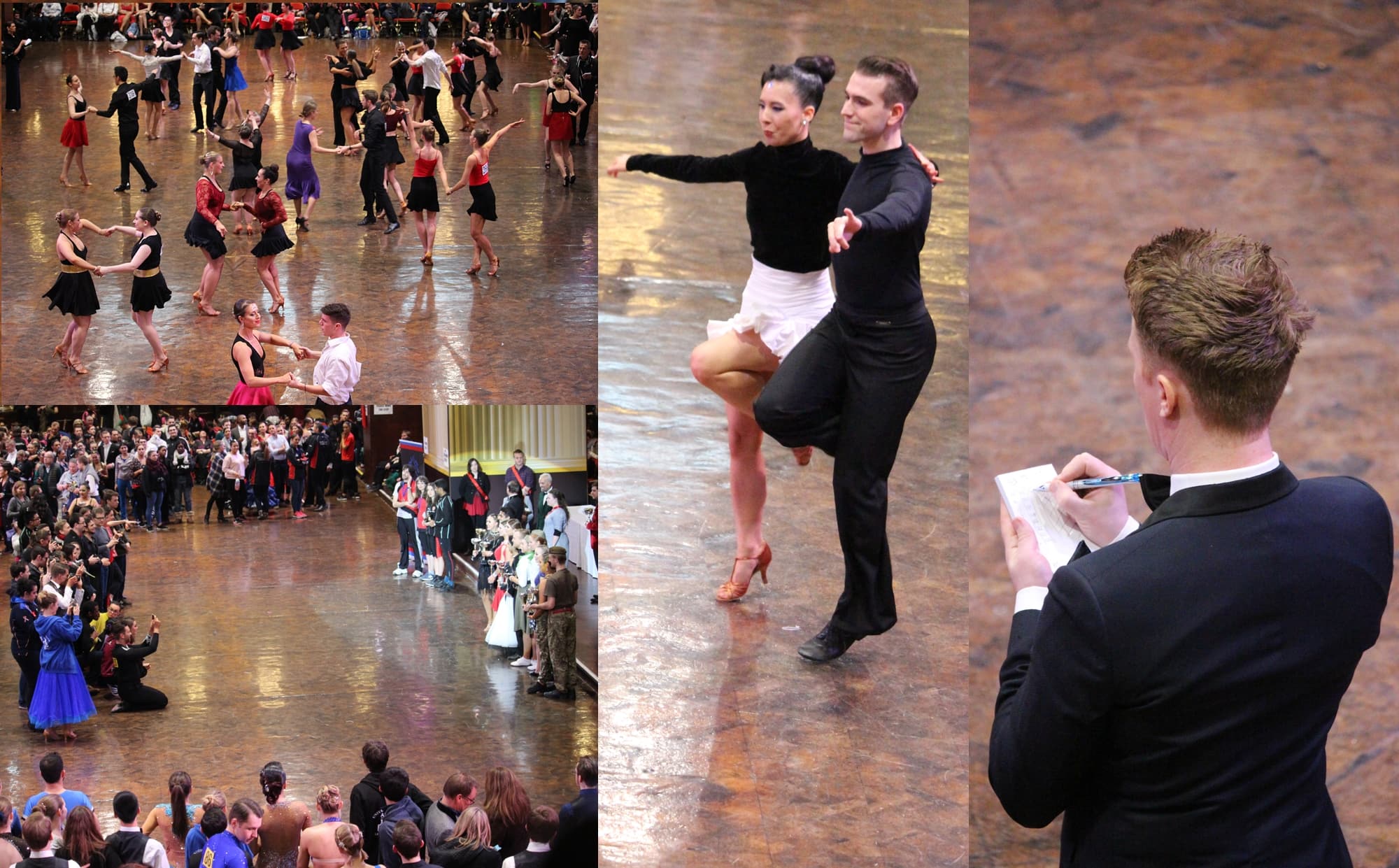
An Olympic event?
Ballroom dancing (which includes Latin) demands a lot of strength and stamina, and many take it very, very seriously.
Intermediate and advanced couples can train as intensively as anyone in a student sports competition — and those can be immensely competitive.
Which is an interesting point, because officially competitive ballroom dancing is now “dancesport”.
The reason? To try and get the discipline into the Olympics. That, at least, is the ambition of the World DanceSport Federation, one of two bodies governing this type of dance globally. The push is not as ridiculous as it sounds. As some dancers say: if artistic gymnastics and ice dancing can be Olympic events, why not ballroom and Latin dancing?
Just look at this on Wikipedia: “In the finals, couples are marked under the skating system and judged by timing, footwork, rise and fall, alignment, direction and floor craft. Competitors must meet World Anti-Doping Agency rules.”
Anti-doping? And there was I thinking you had to be on strange substances just to want to be involved in the first place.
There are even official sizes specified for the dance floor, just as there are for football, basketball or hockey pitches. They’re just not standard. In Canada and the US it’s about 200 square metres, rising to over double that in Europe.
In 1997, the World DanceSport Federation was recognized by the International Olympic Committee as the sole representative body for dancesport. Even so, it has not featured in any Olympics so far.
If dance is accepted as a sport, its associations may also qualify more easily for financial support from national Olympic teams, but not in Britain where Team GB, the national Olympic organisation does not recognise dance as a sport.
It’s the other international body, the World Dance Council, that’s relevant for Blackpool. It handles a range of competitions with less emphasis on athleticism and acrobatics. Instead, it uses a more conservative and limited range of dances in its ballroom and Latin categories.
Exactly how conservative is this World Dance Council?
Take the famous Viennese waltz where the dancers just spin endlessly as they glide round the room.
Traditionally, Viennese waltz only has four steps. The World DanceSport Federation (the one that wants to join the Olympics) has added some new steps. The World Dance Council has not, and the British student clubs largely follow its rules because they come under the WDC-affiliated British Dance Council.
It’s all very confusing. For example some British universities include “dancesport” in the names of their clubs — again, perhaps because sport has a special status in the university — while others don’t.
Whatever they call themselves, they are all members of the Intervarsity Dance Association (whose web address says “dancesport”). The association boasts over 35 university clubs and around 10,000 students — only about a quarter of UK universities but including all the big ones such as Oxford, Cambridge, London, Cardiff, Edinburgh and Glasgow.
The annual Inter Varsity Dance Competition (IVDC) in Blackpool largely follows the World Dance Council’s approach, but does include less conventional events.
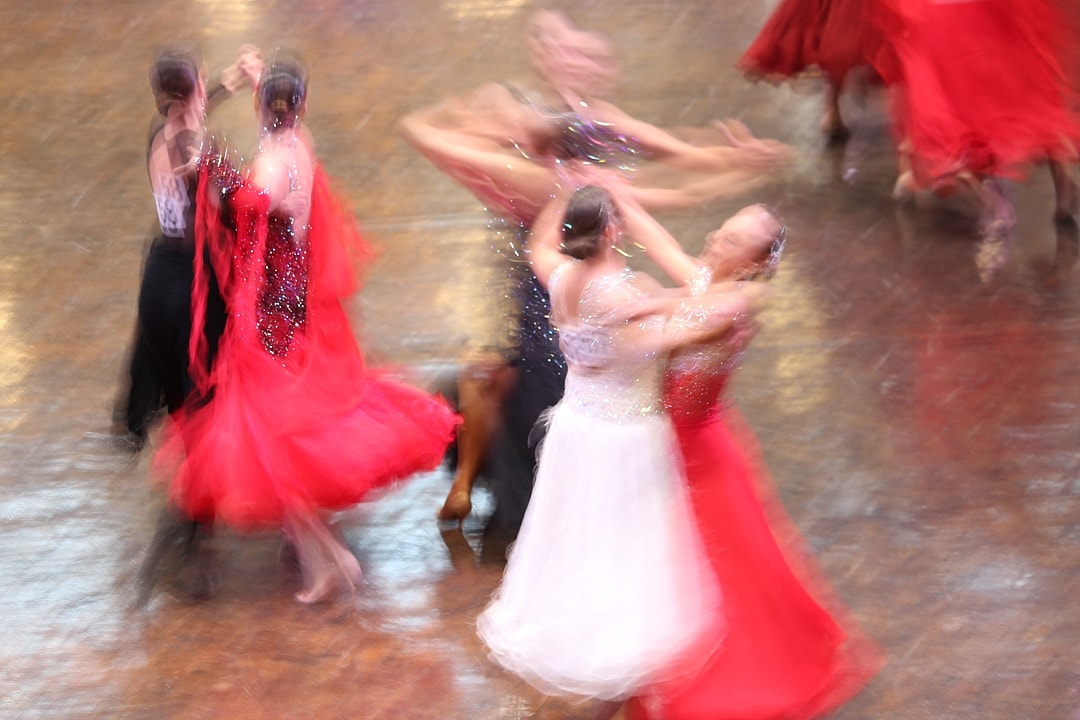
Infectious enthusiasm
Almost 600 couples from 32 universities competed this year, according to the official programme, not counting team members in a lunchbreak offbeat competition.
Their abilities ranged from absolute beginners to advanced. And yes, all dressed up in the worst of taste; the more advanced they were, the more elaborate the clothing. I doubt if any of these cool young people would be prepared to walk in the streets outside looking like that, not in those gowns with fluffy hems, and flimsy bits of stuff looped from their wrists back to their shoulders.
“If someone had told me two years ago,” writes Jo Flashman in The Saint, a student newspaper at St Andrews University, “I’d be dressing up, putting on a full face of makeup (fake eyelashes and everything), and turning my hair plastic with hairspray to participate in a ballroom dance competition, I would have sworn he or she had the wrong person.”
Don’t forget the fake tan, Jo. Don’t forget the fake tan.
She said she started putting all those chemicals on her face and hair at 5 am. And she wasn’t alone: “Everyone looked like completely different people.”
What did Jo make of it? “I was about as dance-oriented as a sheep. And yet, here I am having just returned from competing in one of the biggest annual UK student ballroom dance competitions.”
And: “While the actual dancing was a big part of the experience, the strong team spirit […] really made the weekend unforgettable.”
It’s an awfully long day, from 9 am until close to midnight. Competitors are split into four levels: beginner, novice, intermediate and advanced, each with up to five rounds — and each of those with up to six or seven heats, each in turn involving around 20 couples — leading to semi-finals and finals. That’s how you produce a handful of winners from 600 couples.
So a huge number of dances have to be crammed into a tight timetable. Most dances are timed at about 1 minute 30 seconds with a quick change-over as one set of competitors replaces another, and from time to time as the judges — all experienced professionals — change shifts.
The serious routines are ballroom (two or more from waltz, Viennese waltz, quickstep, tango and foxtrot, depending on the level) and Latin (cha cha, jive, paso doble, samba, and rumba).
But hey, girls and boys wanna have fun, so at lunchtime they have that offbeat team dancing competition and in the evening there’s acrobatic and non-acrobatic rock and roll, followed finally by team ballroom and Latin competitions and prize-giving.
And they also want to be inspired, so mid-way through the evening a pair of professionals give a demonstration dance, accompanied by whoops of appreciation for their difficult and flamboyant routines.
This time it was Richard Still and Morgan Hemphill, five times UK Open Ten champions, World Ten Dance Champions runners-up and British Professional Ballroom Rising Star finalists. (“Ten” means all the dances together, rather than separating ballroom and Latin.) Morgan Hemphill was also one of the judges.
Amazingly the students ran the timetable like clockwork. At one stage they were even ahead of schedule.
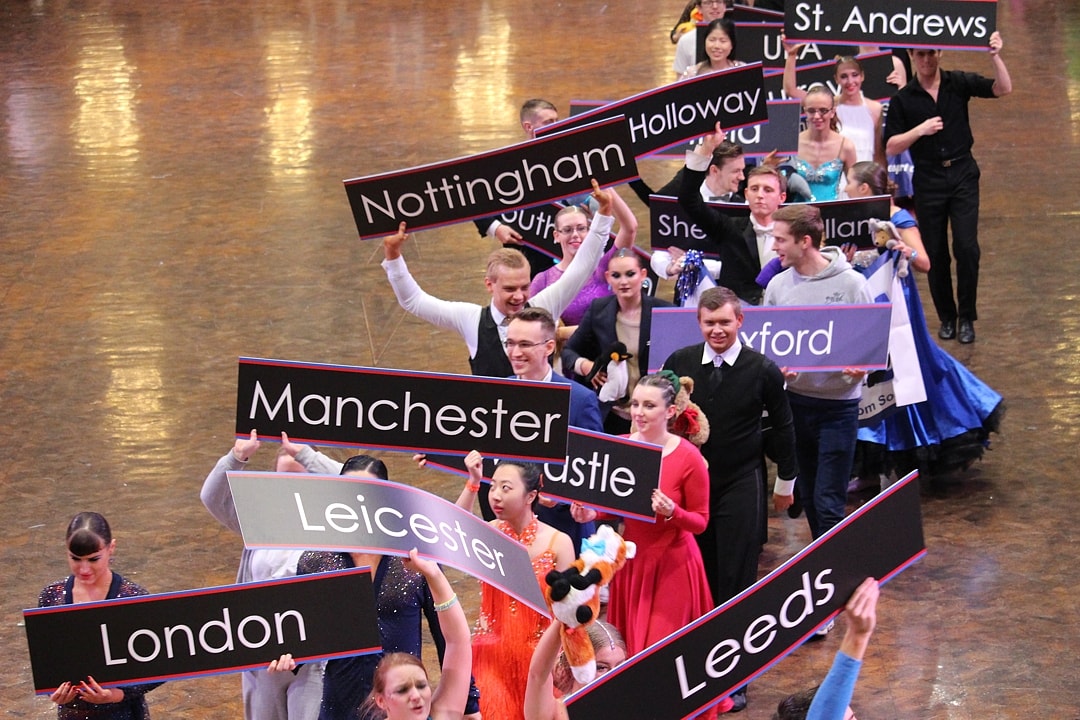
Who cares?
It’s hard to resist the enthusiasm that never tires, no matter how good or bad the dancers are. The level of ability varies considerably. Many only started dancing a few months ago. Some have been doing it since early childhood.
But who cares? Beginners compete as keenly and are cheered on as loudly as the advanced couples whose ability is close to professional (in my eyes anyway).
They even meet in the team event and this can be quite a sight, the advanced couples leaping their quicksteps at speed around the large floor while the beginners carefully tread their oh-so-slow steps backwards and forwards almost on the spot. Who cares?
The students are international as well as British, many coming from various European countries, including eastern Europe and Russia, and also from the Americas, Southeast Asia and China. A number of Thais have reached advanced levels, and one, Sirawit Ittisoponpisan also known as DJ Ice, now produces music specially designed for dance competitions.
There is definitely a bias, however. More women are interested in ballroom dancing than men, so finding a male partner is not always easy. The result is a large number of single-sex couples, all women it seems, and a single-sex category in the competition.
So, yes, I’ve been won over. By the enthusiasm and commitment. By the energy and colour. By the effort and skill. By the way complete beginners are as happy to compete as the experts.
And yes even sometimes by the music. I can almost forgive it being played so loud that it is distorted and to my ears almost unmusical. For almost everyone else it worked. I’ll never forget the judge in his flared trousers who couldn’t keep his feet still as the Latin rhythms pounded out, while he noted down the couples he wanted to keep into the next round.
And yes, I am grateful to these thousands of students for opening my eyes and my mind to something that used to be totally alien.
Finally …
Here’s a bit of atmosphere:
Peter Ungphakorn is based on the shores of Lake Léman in Switzerland. He spent almost two decades with the WTO Secretariat, Geneva. Before that he worked for The Nation and the Bangkok Post. He now writes for IEG Policy on agricultural trade issues and blogs on trade, Brexit and other issues at https://tradebetablog.wordpress.com/
